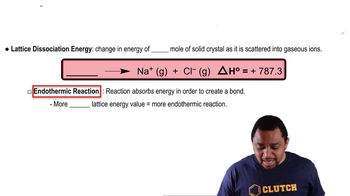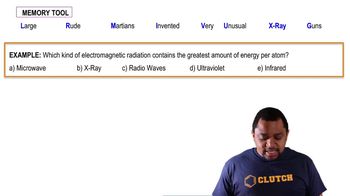Here are the essential concepts you must grasp in order to answer the question correctly.
Dissociation Energy
Dissociation energy is the amount of energy required to break a bond between two atoms in a molecule, resulting in the formation of separate atoms. In this case, the dissociation energy of the carbon-bromine bond is 276 kJ/mol, indicating the energy needed to separate carbon and bromine atoms. Understanding this concept is crucial for relating energy changes to electromagnetic radiation.
Recommended video:
Electromagnetic Radiation
Electromagnetic radiation encompasses a range of waves, including ultraviolet, visible, and infrared light, characterized by their wavelength and energy. Each type of radiation corresponds to specific energy levels, with ultraviolet having higher energy and shorter wavelengths, while infrared has lower energy and longer wavelengths. This concept is essential for determining which type of radiation is associated with the energy calculated from the dissociation energy.
Recommended video:
Electromagnetic Radiation Example
Wavelength and Energy Relationship
The relationship between wavelength and energy is described by the equation E = hc/λ, where E is energy, h is Planck's constant, c is the speed of light, and λ is the wavelength. This equation shows that shorter wavelengths correspond to higher energy photons, while longer wavelengths correspond to lower energy. Understanding this relationship is key to identifying the type of electromagnetic radiation based on the energy derived from the dissociation energy.
Recommended video:
Frequency-Wavelength Relationship
 Verified step by step guidance
Verified step by step guidance


